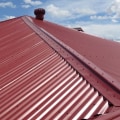When it comes to residential roofs, clay tile roofs are one of the most popular and reliable choices. With their durability and unique aesthetic appeal, clay tiles provide homeowners with many advantages. In this article, we will discuss the advantages and disadvantages of clay tile roofs for residential roofs, explore the different types of clay tiles available, and provide tips for selecting the right clay tile roof for your home.
The Benefits of Clay Tile Roofs
Clay tile roofs offer several advantages to homeowners. From installation to lifespan, they are a popular choice for residential homes.Here are some of the benefits of installing a clay tile roof:Durability:Clay tile roofs are known for their longevity and durability. They can last up to 50 years or more and are resistant to extreme weather conditions. Clay tiles can also be reinforced with concrete or cement for additional strength.
Beauty:
Clay tile roofs come in a variety of colors and styles, allowing homeowners to customize their home's look. The tiles are also available in different shapes and sizes, giving them an elegant and unique appearance.Energy Efficiency:Clay tile roofs help keep homes cool in the summer and warm in the winter.The tiles absorb heat from the sun during the day and then release it at night, helping to regulate the temperature inside the home. This helps reduce energy costs.
Low Maintenance:
Clay tile roofs require very little maintenance. The tiles should be inspected periodically and repaired as needed, but they don't need to be replaced or painted as often as other roofing materials.Fire Resistance:
Clay tile roofs have natural fire resistance, making them a safe choice for homes located in areas prone to wildfires. They are also non-combustible and won't burn or emit toxic fumes in the event of a fire. Clay tile roofs are an excellent choice for residential homes due to their durability, energy efficiency, and aesthetic appeal.They require minimal maintenance and can last up to 100 years or more with proper care. Although they may be more expensive upfront than other types of roofing materials, they can offer long-term savings in terms of energy costs and longevity.



